×
SparkFun will be closed on Tuesday, December 24th, and Wednesday, December 25th, in observance of the Christmas holiday. Any orders qualifying for same day shipping placed after 2:00 p.m. (MST) on Monday, December 23rd, will be processed on Thursday, December 26th, when we return to regular business hours. Wishing you a safe and happy holiday from all of us at SparkFun!
Please note - we will not be available for Local Pick up orders from December 24th-December 27th. If you place an order for Local Pick-Up we will have those ready on Monday, December 30th.
First off, just wanted to let everyone know that SparkFun is going to be operating with a very limited skeleton crew today due to the weather here in Boulder. Overnight we received 12 inches of snow and it's still coming down at a rate of about 3 inches/hour. We'll do our best to get orders out today, but things are pretty gummed up and it doesn't look like they will improve any time today. We'll get back on track as soon as possible. Sorry for any inconvenience this might be causing. Now on to today's post.
We're back and this week we're leaving tubers alone. We've got a few new products as well as a lot of stuff we're clearing out of production that's been collecting dust. First, let's see a couple of demos.
Rotary encoders are one of my favorite input devices. With a switch and the visual feedback of an RGB LED, you can easily have one encoder control a lot of various things.
Everyone seems to want wireless communication for their microcontroller. It's not always easy, and it's not always cheap. Thankfully, the RFM22 Shield is both! The shield uses the versatile RFM22 module to allow your Arduino to pull the plug. Using the Arduino Library, it's really easy to get these shields up and running to do all sorts of things, including peer to peer as well as mesh communication.
In addition to the dual color rotary encoder we carry, we now have some RGB illuminated rotary encoders. We have a right angle PCB mount encoder as well as a panel mount encoder complete with washer and nut. Both have a button in the shaft and 24 pulses per revolution and have a nice tactile click when they're turned.
So, we've been clearing out some of our old production stock. For one reason or another, there are lots of parts that we no longer use, but are still useful for many people. We're getting these listed so people can get their hands on some of the stuff we don't need.
First up is the Uber Tracker Main Board. This board was the main sub-assembly that went into the Uber Tracker. At the heart of the board is an LPC2138 and some connectors and regulators. It's a fun board to tinker around with and it has some potential for projects.
We also found a lot of PIC ICs that we no longer use. PICs are great inexpensive microcontrollers but we tend to use ATMegas for everything now, so we have a bunch leftover. We have some PIC16F777s, PIC18F2520s, PIC16F88s, and PIC18F2550s. And because they have all been used on past designs, they should all be in the SFE Eagle Library.
We also found some TI MSP430s sitting around as well. These are another great microcontroller that we just don't use any more. Check the specs and see if it's right for you.
And lastly, we have some 1M LED Strips. We used to cut our own 1M lengths from the longer 5M lengths, but now we just get them already packaged as 1M. We found a few of the 1M cut lengths and figured we'd offer them at a discount. Get them while they last!
That's all we've got for this week. We'll of course be back again next week with even more stuff. Nick and myself will be attending a local robot convention and the SCORPION will be in attendance with an upgrade or two. For those of you attending, see you there. For everyone else, see you next Friday!


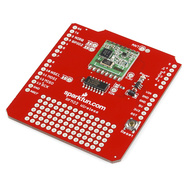
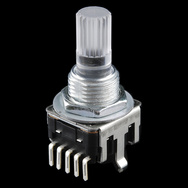
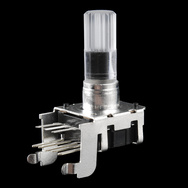
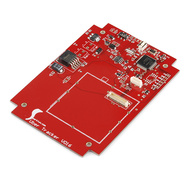
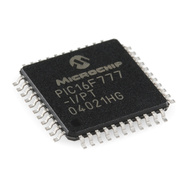
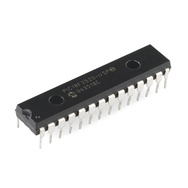


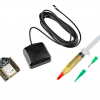
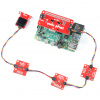






Will Sparkfun continue to sell the PIC micros, or do you plan on phasing them out of your product offerings all together?
It is kinda hard to beat the Arduino when it comes to easy to use programmable platforms.
I personally would like to see hobbyists and SFE bring out the obscure MCUs for people to use. The biggest issue I have with the Arduino is you're not really typing true C/C++ and programming, and for someone who is new to this stuff, can cause headaches down the road when they want to try a PIC, or Freescale chip and they don't have the Arduino Library to help them.
I challenge the SFE Community to spend 1 project using another MCU they are not used to. It will broaden their knowledge and skills, and it's always interesting to see how other companies chose to solve different problems.
There's no need to use a different MCU family. Simply don't use the Arduino platform at all, i.e. you can use the Arduino hardware but no bootloader or libraries.
It then becomes a simple ready-to-use ATmega328 platform.
You can then try other MCUs like the ATtiny85, ATtiny861, etc.
No no no. PICs are awesome and have their place. We're selling these PICs (16F777, SMD 16F88, etc) because the designs they were on have long been retired so we're never going to use up the stock. We'll still carry the dev boards, tools, and DIP packages of the newest PICs.
"PICs are awesome..."
:)
Thanks Nate! After I saw the production entries lined up next to the regular PIC entries, I realized you were probably just getting rid of production stock. I just needed to make sure. I love my lil' F88s and all my PICs!
you beat me to it...
.... I dont think your post needs further investigation.
Sad.
I'm not so sure. They put the production chips alongside the regular listings at a reduced price. Looks like they will keep selling them in the short term, at least.
Been a PIC user for ages, back when serial JDM programmers were the norm, but the Arduino team nailed it with "easy".
What is really a very short time ago when I tried my first Arduino, I couldn't believe how stupid-easy it was! One simple application, a USB cable, and poof, blinking LEDs in seconds! The code nicely abstracts the hardware, but not too much.
The open-source JAL community could have easily done the same thing with PIC hardware, and things could be very different now. It seems that "easy" PIC development went down the wrong road of bizarre, proprietary, "emulated" systems like PICaxe, and the like.
The tricky part with PICs is there are -so- may variations and platforms it's a Microsoft-like nightmare to support them all in any sensible way! Picking a fixed-platform concept like the ATmega 8/168/328 would have been much harder to do with PIC.
If you'd like to try PICs, the JAL environment is much like Arduino, perhaps even a bit easier to understand due to it's PASCAL-like structures vs. C. It also creates incredibly efficient code, and has an incredible assembler/compiler that creates fully-readable ASM files so you can actually see what the low-level code is for whatever you do.
P.S. The new 16F 8 and 14-pin "midrange" PIC chips are awesome for small projects! ;)
So, what is the advantage of using one of these RFM22 wireless boards over an XBee? They are not really any cheaper. Maybe they are easier, but the nice thing about an XBee is that you don't need a microcontroller to use it. Do they have better range? What is the range?
This post is further evidence that the PIC community... is dead.
(roll single tear here)...
guess I'm going to have to open that arduino I bought and never used....
I was a PIC user for quite a while, but Microchip got too big for its britches. Their programmers used an undocumented proprietary protocol, and only worked with MS-DOS, leaving Linux and Mac people out in the cold. So I bought a third-party programmer and did a fair amount of work to get it working. But then newer chips came out, and to work with them, I'd have to update the firmware in the programmer - and the new firmware only spoke a new undocumented proprietary protocol so it would work with the (DOS only) PIC IDE.
I was pleased with Microchip's efficient use of silicon to produce a small but effective instruction set. I was writing a paper on microcontrollers vs less integrated solutions, and wrote Microchip to ask how many transistors were on a 12C508. They replied that it's a secret and they won't tell me. Eventually I got tired of programming in assembler, and C is a poor fit with the PIC's specialized instruction set. So I gave away all my PIC chips and programmer and bought the Atmel demo/programmer board and a bunch of AVRs.
Microchip did eventually see the error of their ways, and they've opened up their specs, and offer a (poorly integrated, incredibly bloated) IDE for other operating systems, but for me, I had already changed horses.
It's not just PIC, TI blew it the same way with their MSP430. They too eventually decided to support modern operating systems, but by then, the world had passed them by.
"... the world had passed them by"
Months ago Microchip tried to acquire Atmel an TI acquired already National Semiconductor... These are very big companies that sell many many more (millions of) microcontrollers than Atmel. Did you heard about the TI Launchpad? (dev board + programmer/debugger + two 16-bit micros + etc. for just $4.xx) If so, it seems to me that they are trying really well to catching up...
PICs are absolutely not dead. If you look into most commercial/industrial products you will see a PIC. My company has actually switched back to PICs from AVRs for all sorts of reasons. PICs are rock solid and you usually you have no supply issues. Unlike AVRs which, I have personally seen, one batch of chips work perfectly and the whole next batch be faulty. Also, AVRs supply structure is terrible. Parts are constantly being changed/updated which forces distributors to carry low stock because they don't want to be stuck with tons of old chips. Let's not even get started on dev tools. If you think MPLAB X is bloated you should download AVR studio 5. I think it's over a gig to download everything. Didn't want to start a PIC vs AVR war but I had to at least chime in and give my personal experiences on the two in a non-hobbies view.
I remember being laughed at while studying for deciding to use a PIC in my micro project rather than an AVR because "PIC's are for hobbyists", this was well before the days of the Arduino, the poor old PIC carried the same stigma that gets put on the arduino now. Don't get me wrong, I love AVR's, ARM's etc. But I choose the appropriate micro for the task and not the Micro I am familiar with, and there just seems to be a PIC that fits exactly what I want to do more often than not.
Very often now days too, I pull apart the new things that come into the office and find that very often there is a little PIC sitting at its heart. PS.I haven't looked into it further but MPLAB X is using Net Beans, which is mutli platform, so maybe the days of PIC being supported for Windows only may have dissapeared
Personally, Ive never used AVRs so I wont comment on that. The arduino/AVR community has done wonders, and the suport for all things arduino is incredible. although i tried to read the Atmel chip datasheets and it was discouraging... i cant read Engrish..
I am however a PIC user, and am getting really jealous of all the cool toys NOT available for me. I see this post as a step further away from PICs...for the community (aside from the really cool cheap pricing)
it is my totaly biased opinion, that PICs are indeed rock solid. thus i fail to understand why(I am sure there is good reason) the community took AVR over PIC to develop all these awesome devices sold here...or more importantly why did nobody make an equivalent... competition makes improvement.
i have AVR envy.
Personally, I have more of a PIC background than an AVR background, though I've worked with both... But I'd say there's one big advantage AVR has over PIC: That is the AVR target for GCC. There's a few other advantages comparing ATMega to PIC16F (though that's not exactly a fair comparison - ATMega is more directly comparable to PIC18F in terms of features and performance - I just mostly use PIC16F) but having a reliable, full-featured and familiar compiler for AVR that even makes it into the Debian distribution is a big advantage in my opinion.
check out chipkit uno32 or chipkit max32. Its a microchip arduino equivalent made by digilent. Its pretty cheap, uses a 32bit pic micro. And theres a modified arduino IDE available that supports this chipkit as wel as the original arduino format.
All about the free development tools, libraries, & community support, which PIC had almost none of.
Not at all!
PIC has massive community support, and is really far more mature and established than the fairly "new" Arduino community.
About open-source, PIC JAL has been around for almost 11 years (!), totally open-source, cross-platform, and very well supported. JALlib is an incredible library of functions and device definitions, again, open source.
Here's a link: http://code.google.com/p/jallib/
The only thing stopping JAL from being truly exceptional for the beginner is an "Arduino-like" IDE that needs no set-up or supporting applications, and the addition of a universal bootloader with DTR-reset function. JALedit is an OK IDE, but not a lot of development has gone on with it, see: http://code.google.com/p/jaledit/
FYI, Jaluino is an attempt at a PIC Arduino "clone", but they are kind of missing the point by not putting any effort into a distinct IDE. (which is really 90% of the value of Arduino!) See: http://jaluino.org/
It's all about marketing and buzz words. The 'duino community has, by far, more of both. Buzz words sell. Plain and simple... I've been mainly on the PIC side of the house with the occasional step over the AVR side since about 1995. They're both great for what they do. I prefer to stick with the PIC for the foreseeable future. I develop faster with the PIC because I'm used to it. If I'd have started out with AVR's, the situation could just have easily been reversed. And there's plenty of free dev tools, hardware, support, etc. for the PIC. I could say the same for the 'duino's. But I know that same support is just a search away if I need it.
not([not easy] + [not cheap]) = [not(not cheap)] + [not(not easy)] = easy + cheap.
it's NOT not easy, meaning it's easy ;-)
Actually, I think it should be
not([not easy] & [not cheap]) = [not(not easy)] | [not(not cheap)] = easy | cheap
It's easy or cheap :P
what is the "local robot convention" you are attending?
Ok Guys, I got this email an hour ago and I don't see any on the site: There are now 90 units of the Ding and Dent - Summer Clearance $5 (DD-09844) immediately available for purchase
PLEASE send me a link that isn't retired!!!!
:) thanks!
Sorry about that, due to the snow day, nobody was around to click the "unretired" switch on that item. We'll get to it first thing next week.
FALSE.
someone put it into the wrong SKU. It's not summer.
:-)
Those responsible have been sacked.
Those responsible for sacking the people who have just been sacked have been sacked. ROTFL!
LMAO! Thanks for the reply
Thanks for getting a panel mount version of the encoder. This is exactly what I need for a project. Any chance of making the code from the demo available?
Check the rincoder breakout. It's only for the 2 color version, but should work ok.
T_T You're getting all of the snow while we Wisconin people have nothing but yellow grass :(
This is the first substantial precipitation we've gotten in a while, and we're happy to get it. We've been as warm and dry as the rest of you.
That's great for you.
Weather is unfair.
Just got a emailed link to a Sparkfun related blog on ECN Online, posted by Dia Campbell.
http://www.ecnmag.com/Blogs/2012/02/Dungeons-and-Dragons-Dice-Gauntlet/
Those wireless shields look pretty nice. considering X-Bees are so Freakin difficult to work with. Is it just me or do other people have a similar problem with getting X-bees to just WORK?!?
Series 1 or Series 2? I have 3 Series 1 XBee devices all talking to each other. Two hooked up to Arduinos and one hooked up to a Mindstorm NXT. They kind of just work for me.
Have you upgraded their firmware (and are they all running the same version)?
Here is a link to common XBee problems http://www.faludi.com/projects/common-xbee-mistakes/
I had no problems getting three series 2 XBees to work. One is the coordinator, one is a router, and the third is and end device that sleeps for 10 minutes, wakes up and takes some measurements and sends them back to the coordinator, then sleeps again. Looks like a great mesh networking technology.
The only nasty part was that xctu only runs on Windows so I ended up having to install Windows XP in a VM just to use it to configure the XBees.
please answer this... you guys know there are a few controller boards on reprap community and other kind of electronics like the heated bed platform (which is just a pcb with a resistance made by copper traces) and others... and I wonder if you guys are gonna sell those kind of stuf... you guys already have some nice motors and some new designs are comming in a near future from the reprap community, I wonder if you could contact the people who are responsable for those designs and sell it at a reasonable price at sparkfun, I miss having some 3d printing and cnc stuff here, I know you guys posted a board with 4 a4983 in it but that board was bad if I can say, a more attractive way would be to sell some of the ones people are used to have on their repraps, like ramps, sanguinololu, or like the ones comming in next, like melzi and others...
We've thought about designing some bits (heater PCB, more complete stepper motor controllers, etc) for the 3d printing world but there's already some really fantastic designs out there. We don't want to jump on the bandwagon unless we can be really really good at it. If someone wants to collaborate with us, we're always open to doing what we are best at (tweaking for manufacture, building for demand, etc). (I seem to be using a lot of ,etcs this morning)
Printrbot is quite new and may want to collaborate with you on some aspects of their design.
We helped put Printrbot's awesome new "Printrboard" into production. It's well designed and went through a solid DFM process by engineers all over the USA. Price is already bottomed out for current demand (2000 board run).
I love Sparkfun, but Nate's right to stay out of the competitive RepRap market until the dust settles and Sparkfun can add value.